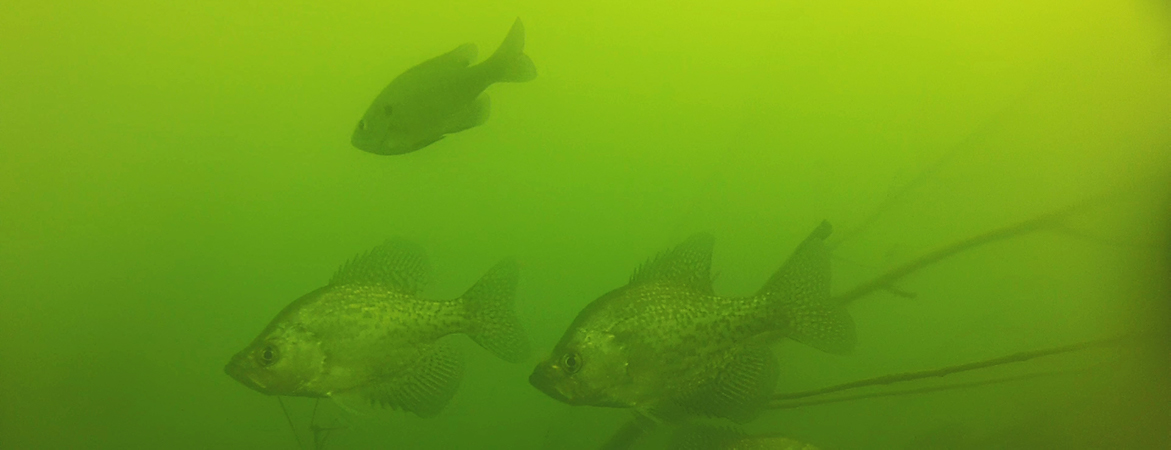Do you have a live Christmas tree? Here's one way you can recycle it
Through a program called “Christmas for the Fishes,” the Kentucky Department of Fish and Wildlife (KDFW) collects discarded Christmas trees to create fish habitats.

There’s nothing cozier than the warm glow of a Christmas tree filling a room. Add the scent of a live evergreen, and you’re practically living in a Hallmark movie.
But once the holidays pass and January creeps in, the task of removing your beloved tree awaits. For many, this may seem a solemn duty, signaling the end of a joyous season and the beginning of several holiday-less months ahead. But there is some good news: Instead of throwing your live Christmas tree out with the trash, you can give it new life… as a fish habitat!
You read that right. The tree that’s currently twinkling in your living room could soon be home to native Kentucky species like Smallmouth Bass, Bluegill, and Crappie. Through a program called “Christmas for the Fishes,” the Kentucky Department of Fish and Wildlife (KDFW) collects discarded Christmas trees and sinks them in bodies of water around the state to create fish habitats.
This is needed due to the depleted woody habitat in many of Kentucky’s lakes and reservoirs, especially those in excess of 50 years old, explained Joseph Zimmerman, a fisheries biologist for KDFW.
“The vast majority of lakes in Kentucky have some age on them,” Zimmerman said. “Fish need structure in order for them to feed. They need structure for cover and refuge. Because of the lake age in Kentucky, a lot of that woody debris is broken down or might be covered up in sediment. A lot of our lakes have big winter drawdown – if you go visit some of the lakes in Kentucky during winter, they look like a moonscape. It’s those areas where there is no woody debris on the bottom where we go in and build sites for fisheries.”
Staff at KDFW have been running this program since the 1970s, but volumes have significantly picked up in recent years. Zimmerman said tree donations have skyrocketed from a couple thousand to upwards of 6,000.
Depending on a site’s specific needs, KDFW may place up to 100 trees in one location.
“We’ll place these Christmas trees in areas based on the specific lake management goals,” Zimmerman said. “So, for instance, if we build a habitat site on a large flat in a lake, we may cluster it up real tall to create a ‘reef of Christmas trees’ by placing 50 to 100 trees in one location.”
Once the habitat is placed, KDFW staff can evaluate its success using electrofishing equipment. (At one point, they tried scuba diving, but visibility was too low in Kentucky’s murky lake waters.) Electrofishing is a technique used by fisheries biologists to sample and study fish populations in bodies of freshwater.
“We tend to find out the sites where we cluster 75 to 80 Christmas trees, the more fish they’re going to hold,” he said.
Habitat building is necessary regardless of the “Christmas for the Fishes” program, so having access to already-cut trees is a big advantage from both an environmental and feasibility standpoint.
“This program is an easy way to get a lot of woody material to put in our lakes,” Zimmerman said. “We use Christmas trees because they’re already cut. Otherwise, we would spend a lot of time throughout the year going to areas and collecting trees for fish habitat. It’s a lot for work having to cut your own trees and haul them to the lake.”
The goal? To create a gratifying environment for anglers across the state. KDFW publishes GPS coordinates of these habitats online so that fisherman can easily access them. A list of tree drop-off sites are also available here.
“The angler catch is the end goal,” Zimmerman said. “When you get a phone call or an email from an angler that says they found one of our sites and that they caught a lot of crappie, that’s the rewarding side of the job. A lot of these sites really attract a lot of gamefish. If you create that kind of predator-prey interaction, those will be areas where our anglers can improve their catch.”
Interested in recycling your Christmas tree into a fish habitat?
First, remove any lights, ornaments, or other artificial decorations from your live tree. Then, drop it off at one of the more than 30 sites across the state designated by the KDFW. This year, collection will begin immediately following the holidays and run through Jan. 15. Sites are open during daylight hours only (8 a.m. to 5 p.m.) and will be unstaffed but clearly marked using signage. The locations are in parks for the most part, so it will be a good opportunity to get out of the house and enjoy a local park while you help fish populations across the state. To find a drop off location near you, visit fw.ky.gov.
